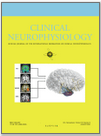 Myotonic dystrophy type 1 is one of the most common neuromuscular diseases in adults. It is due to the presence of pathological CTG nucleotide triplet expansions resulting in trapping messenger RNAs inside the cell nucleus. Its clinical manifestations are, by nature, multisystemic: muscular and cardiac damage, cataracts, various endocrine disturbances…. Central nervous system involvement is common although rarely documented. In addition to the psycho-cognitive difficulties observed in many of these patients, imaging abnormalities in white matter areas or even cortical atrophy can be found in some patients.
Myotonic dystrophy type 1 is one of the most common neuromuscular diseases in adults. It is due to the presence of pathological CTG nucleotide triplet expansions resulting in trapping messenger RNAs inside the cell nucleus. Its clinical manifestations are, by nature, multisystemic: muscular and cardiac damage, cataracts, various endocrine disturbances…. Central nervous system involvement is common although rarely documented. In addition to the psycho-cognitive difficulties observed in many of these patients, imaging abnormalities in white matter areas or even cortical atrophy can be found in some patients.
In an article published in May 2020, Dutch researchers associated with the OPTIMISTIC consortium report an indirect study of brain function through measurements of the electrical activity of the brain. Twenty-eight adult patients with DM1 thus benefited from an electroencephalogram (EEG) coupled with a neurocognitive assessment. The results were compared with those of a control group of twenty-six healthy individuals. A detailed analysis based on new algorithms for the interpretation of electrical signals allowed to determine a differential profile of the functional connectivity observed at specific frequencies of the EEG compared to the control group.
